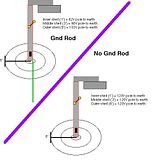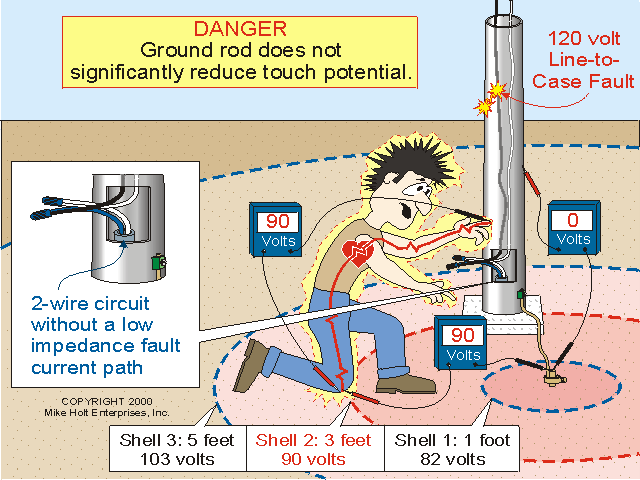- Location
- Windsor, CO NEC: 2023
- Occupation
- Hospital Master Electrician
Re: bonding metal street light poles
The hot wire touching the pole creates the scenario for someone to get shocked. The picture is to demonstrate that a ground rod does not solve the problem.

Without any grounding electrode, the voltage is a clean 120 volts, measured from 1', 3', and 6' away from the pole.
With rod = shock hazard
w/o rod = shock hazard
Nothing changes adding a rod. Well, the potentials change a little bit, but it's still a shock hazard either way.
No, Tom, you misunderstood the picture.Originally posted by TOMWELDS:
It shows how adding a ground rod creates a scenario were someone can get shocked.
The hot wire touching the pole creates the scenario for someone to get shocked. The picture is to demonstrate that a ground rod does not solve the problem.

Without any grounding electrode, the voltage is a clean 120 volts, measured from 1', 3', and 6' away from the pole.
With rod = shock hazard
w/o rod = shock hazard
Nothing changes adding a rod. Well, the potentials change a little bit, but it's still a shock hazard either way.


